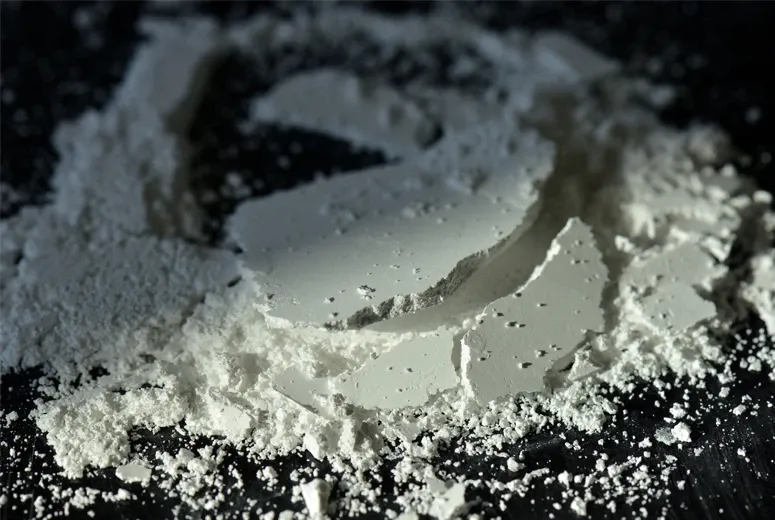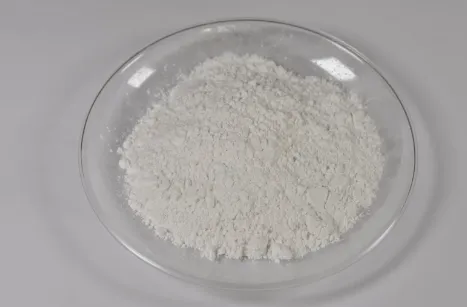

Layer upon layer of mica

mica in
X represents large interlayer cations, such as K+, Na+, Ca2+, Ba2+, Rb+, Cs+, etc. Y represents octahedral cations, such as Al3+, Fe2+, Mg2+, Cr3+, Ti4+, Fe3+, etc. Z is mainly Si4+ and Al3+; The ideal ratio of the additional anion (OH)- to (O)2- is 2:10, and (OH)- can be replaced by F- and Cl-. Most mica contain 4% to 5% water. Therefore, although they may be called mica, the chemical composition of different mica may be very different, for the purpose of research, we collectively refer to the minerals with this type of characteristics as mica group minerals.
It is an indispensable and important raw material in the fields of electric heating equipment, wire and cable, aerospace and so on.

At the core of a mica factory's operation is the extraction and processing of mica flakes or sheets. This begins with the mining of high-quality mica, followed by a series of stages that include crushing, screening, and several refinements to ensure purity and consistency. One of the key components that defines the factory's expertise is its ability to maintain the integrity of mica while enhancing its properties to suit specific industrial applications.


Mica powder, known as industrial monosodium glutamate, is widely used. With the continuous development of technology and application market, and some new requirements have been put forward for the quality of mica powder, so synthetic mica powder has been developed. Compared with the natural mica powder processed by natural mica ore, and the synthetic mica powder synthesized by using a variety of raw materials through high temperature reaction and other chemical methods. What are the advantages and differences between them?
- Recently published
- kinds of mica
In short, there are significant differences between natural mica powder and synthetic mica powder in production methods, color and appearance, performance characteristics, application fields, and price and cost. Synthetic mica powder is superior to natural mica powder in terms of high temperature resistance, transparency, electrical insulation, stability and mechanical properties, while natural mica powder has more advantages in resource acquisition, cost and color. When choosing which type of mica powder to use, you can consider the high temperature resistance of the required material, electrical insulation performance, transparency and color requirements, evaluate the mechanical strength and hardness of the required material, consider chemical stability and other different application scenarios and technical requirements to make a reasonable choice.
Mica is a group of silicate minerals that can be found in a variety of colors and textures. It is characterized by its ability to cleave into thin, transparent sheets. This unique property allows it to reflect and refract light, creating a shimmering effect when added to cosmetics. Mica is commonly used in various beauty products, including eyeshadows, highlighters, and, notably, lip balms.

A group of parallel cleavages can be seen in a photograph of biomica under orthogonal polarized (left) and single polarized (right) mirrors.
The mica industry is undergoing profound changes. With the help of emerging industries, the mica industry will be a large market of more than 10 billion.
As consumers become more conscious of the ingredients in their cosmetics, there has been a growing demand for mica-free or ethically sourced mica products. This trend has led to the rise of synthetic mica, a laboratory-grown alternative that mimics the appearance and texture of natural mica without the environmental or ethical concerns associated with mining.

- Random reading

Natural high quality Muscovite:feel fine, soft lubrication.
The mica variety that does not contain iron is colorless in flakes, and the higher the iron content, the darker the color, and the more polychromatic and absorbable it is. According to the different chemical composition and optical characteristics, mica group minerals can be divided into Muscovite subgroup, biotite-phlogopite subgroup and lemica subgroup. The common mica are biotite, phlogopite, Muscovite and so on.
- Understanding Synthetic Mica
Featured products:
Mica is a very common rock-forming mineral, widely distributed in crystalline rocks. Its general chemical formula can be expressed as:
Mica powder, known as industrial monosodium glutamate, is widely used. With the continuous development of technology and application market, and some new requirements have been put forward for the quality of mica powder, so synthetic mica powder has been developed. Compared with the natural mica powder processed by natural mica ore, and the synthetic mica powder synthesized by using a variety of raw materials through high temperature reaction and other chemical methods. What are the advantages and differences between them?


The mica variety that does not contain iron is colorless in flakes, and the higher the iron content, the darker the color, and the more polychromatic and absorbable it is. According to the different chemical composition and optical characteristics, mica group minerals can be divided into Muscovite subgroup, biotite-phlogopite subgroup and lemica subgroup. The common mica are biotite, phlogopite, Muscovite and so on.
Featured products:
Soft plastics, which are utilized in myriad applications—from packaging materials to automotive components—benefit significantly from the incorporation of mica powder. The addition of mica not only enhances the aesthetic qualities of soft plastics but also improves their functional performance.
Natural mica powder and synthetic mica powder also have great differences in electrical insulation, mechanical properties, chemical stability, application range and cost. Natural mica powder has good electrical insulation, but the volume resistivity is lower than that of synthetic mica. Synthetic mica powder has better electrical insulation properties, high volume resistivity and stable dielectric constant, and is suitable for high performance electrical insulation materials. The hardness of natural mica powder is relatively low (2-3), and it has good elasticity and peeling property. The hardness of synthetic mica powder is higher (between 3 and 4), and the tensile strength and compressive strength are better than that of natural mica powder. Natural mica powder is stable in acid-base solution, but it is easy to decompose at high temperature. Synthetic mica powder is stable to acid and base at room temperature, but will be slowly corroded by sulfuric acid above 300℃. Better thermal stability, not easy to release gas. Natural mica powder is widely used in electrical appliances, welding rods, rubber, plastics, paper making, paint and other fields. Synthetic mica powder is mainly used in high-end electrical insulation materials, aviation, aerospace, national defense industry and other high-tech fields. Because synthetic mica powder needs to be produced through complex chemical processes, its production cost is usually higher than that of natural mica powder. Therefore, in the market, the price of synthetic mica powder is often higher than that of natural mica powder. However, with the continuous progress of production technology and the gradual emergence of scale effects, the price of synthetic mica powder is expected to gradually decrease.
- Search
- Links
- mica flakes for sale
- what do you do with mica powder
- what can i do with mica powder
- skin safe mica powder
- mica powder what is it
- mica design
- mica for lip balm
- synthetic fluorphlogopite vs mica
- mica manufacturing company
- mica types
- makeup products that contain mica
- synthetic fluorphlogopite for skin
- mica beauty cosmetics eyeshadow
- synthetic fluorphlogopite in cosmetics
- mica powder ingredients
- synthetic fluorphlogopite
- synthetic mica powder
- mica powder used for
- makeup with synthetic mica
- mica pigments for cosmetics
- mica operation
- what is mica powder used for in makeup
- mica made of
- mica powder epoxy resin
- pearlescent powder
- mica price list
- mica powder for lip balm
- what can you use mica powder for
- phlogopite mica
- mica factory
- mica powder use
- pearl powdered pigments
- what to do with mica powder
- is mica powder safe
- mica dye
- mica raw material
- metallic mica powder for epoxy
- calcined mica for welding electrodes
- mica flakes bulk
- mica powder in cosmetics
- white pearl mica powder
- fluorphlogopite
- eyeshadow mica powder
- mica flakes in resin
- interior insulating paint
- mica powder safe for skin
- gold mica powder for cosmetics
- mica powder for lip gloss
- adding mica to candles
- wax melt mica powder
- heat reflective interior paint
- mica flakes
- can i use mica powder in candles
- kinds of mica
- lip safe mica powder
- mica powder what is
- bulk mica powder
- 1 coat interior paint
- are mica powders safe
- synthetic mica vs natural mica
- epoxy resin pigment powder
- what is mica powder
- pearl pigment powder
- ground mica
- mica powder for epoxy resin
- non toxic pigment powder
- is synthetic mica biodegradable
- mica powder for makeup
- eco friendly mica powder
- mica powder glitter
- mica powder for resin
- organic mica powder for lip gloss
- automotive paint pigment powder
- cosmetic mica
- mica for soap making
- mica powder for plastic
- mica powder paint
- shimmer mica powder
- epoxy mica
- mica pearlescent pigments
- can i use mica powder in soap
- mica pearlescent
- is mica powder safe for skin
- rose gold mica powder